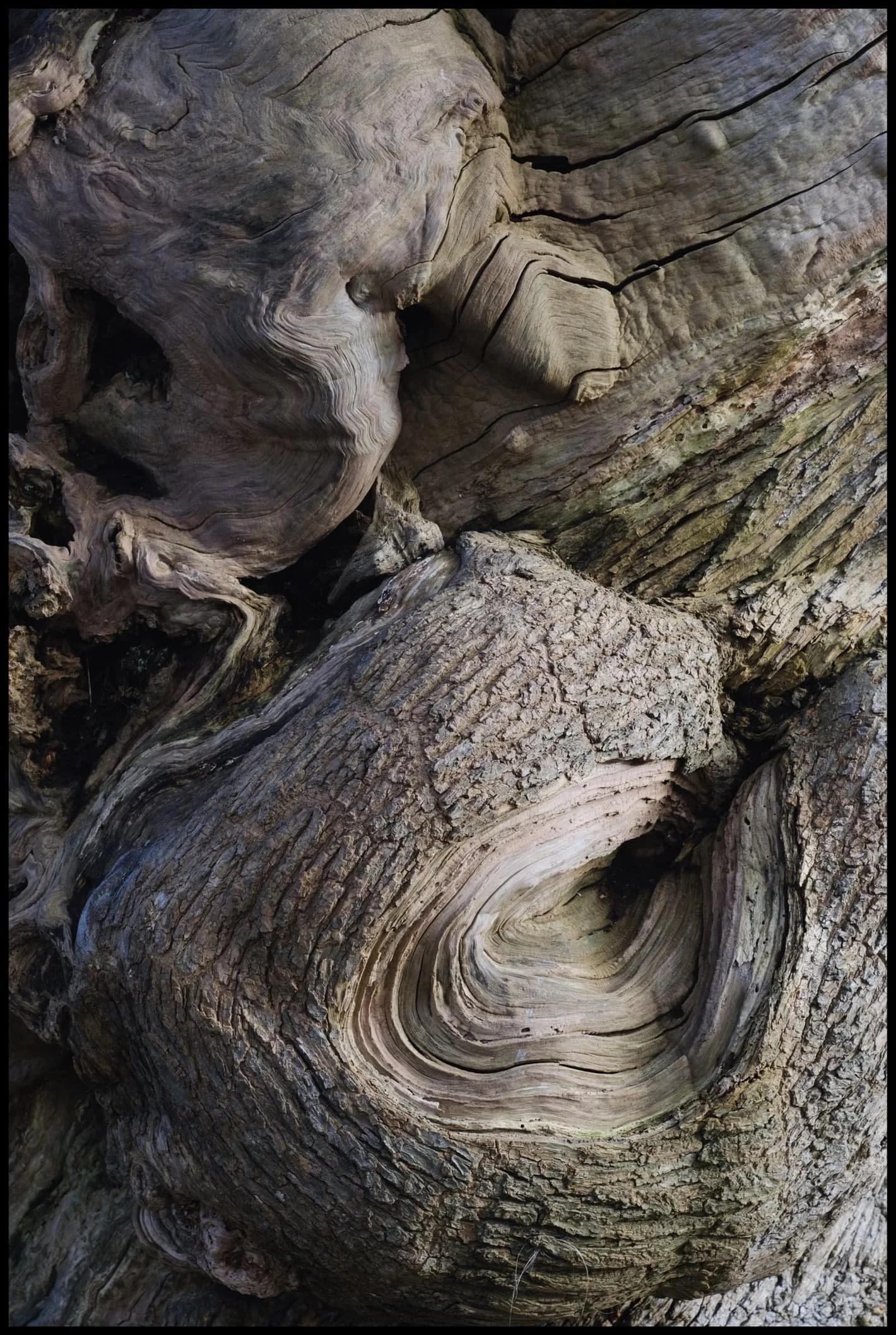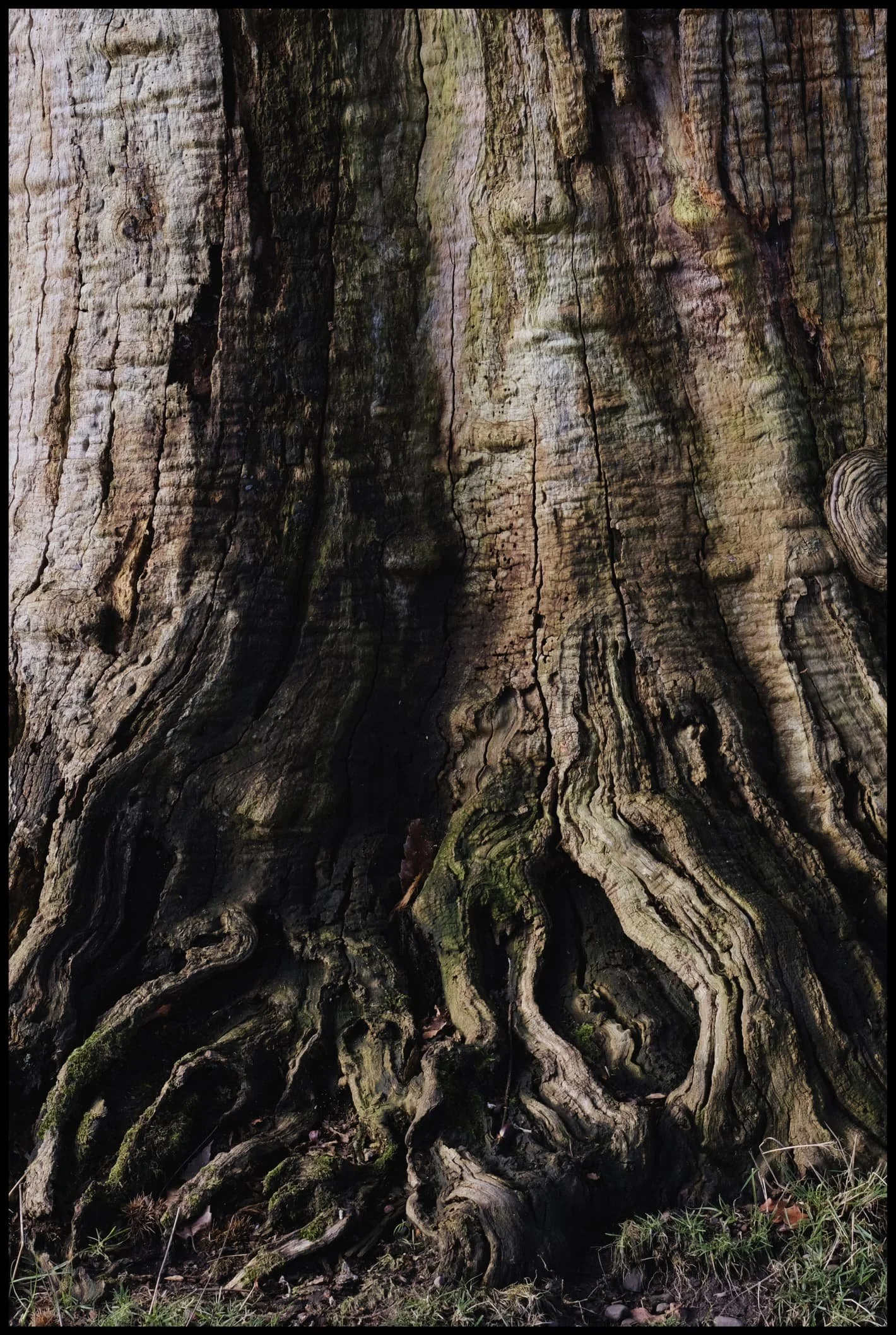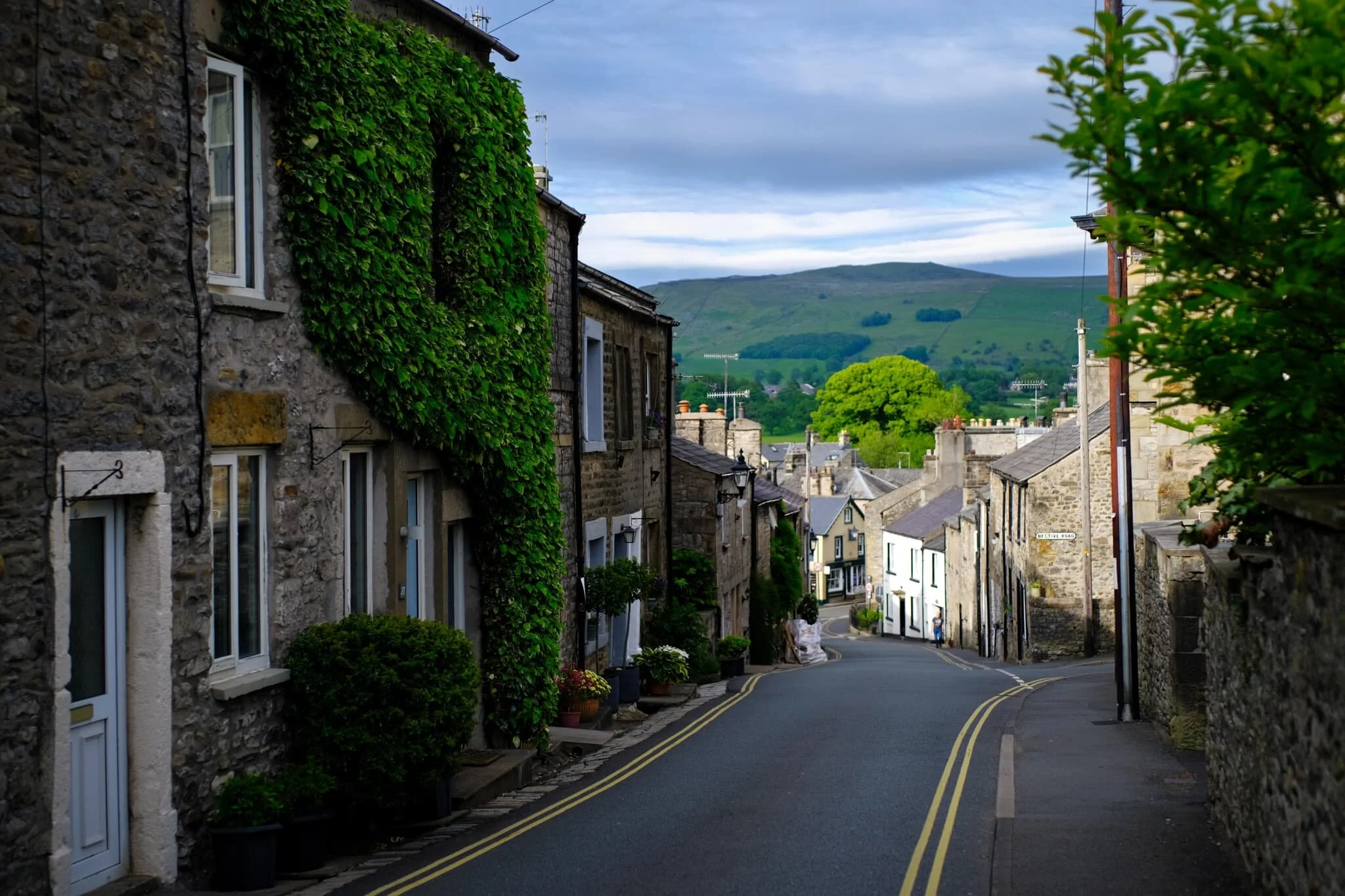Levens Hall Deer Park, Cumbria, Winter
I hope you like trees.
I hope you like trees.
With other duties and tasks that needed to be completed today, we decided on a lovely 10,000-step walk around the Levens Hall Deer Park. The park was landscaped some 300-odd years ago, around the same time as the gardens of the historic Levens Hall. As such, many of the trees in the park are centuries old and, unfortunately, some of them have suffered after Storm Arwen’s 100mph winds.
Levens Hall Deer Park is home to Black Fallow Deer and a herd of rare-breed Bagot goats. Whilst we didn’t see any of the distinctive goats, we did manage to spot some of the deer, happily chilling and grazing in the grounds.
With the trees devoid of leaves, there were opportunities to focus more on the shape and texture of each tree instead. With the sun out, we got some delicious golden side lighting, which I happily took advantage of with some more unusual close-up compositions.
All photos shot on my Fujifilm X-T2 using my three prime lenses: a Fujinon 23mm f/2.0, a Laowa 9mm f/2.8, and an adapted Pentax SMC 55mm f/2.0. Images made 95% in-camera using Øyvind Nordhagen’s Modern Negative Fujifilm recipe, finished in Pixelmator and Darkroom.
The main lay-by near the park was already full, so we had to drive further up the A6 to find the second, smaller, lay-by. Not a problem, you just follow the mossy and slippery path all the way to park entrance.
A beautiful iron-wrought gate attached to some of the cottages near the park.
Once in the park, it was already shaping up to be a beautiful day.
With their leaves gone, it felt to celebrate the overall shape and “personality” of each tree.
Some of them still appear to have remnants of their autumn foliage on display.
One of many Storm Arwen casualties around the park.
It was nice to see families around enjoying the park too.
It blows my mind to think of the forces involved to rip a strong-looking tree like this in half. What a storm…
If some of the ancient trees suffered, then the surrounding dry stone walls had no chance.
These cottages must have some smashing views of the Deer Park and perhaps beyond the Morecambe Bay.
A tree stump being consumed by fungi provided me with some delightful textures to play with.
The extended loop of the circular park walk involves walking up to Force Falls, crossing the bridge over the river, and following the road back into the other side of the park. I weren’t complaining; Force Falls is always stunning.
The southeastern side of Levens Hall Deer Park was already giving us some beautifully gnarly trees to gawp at.
My lovely Lisabet, in her natural element.
This cottage on returning to the Deer Park caught my eye. Beautifully idyllic, and the light was the cherry on top.
So beautiful. Practically a sculpture in its own right
One of the distinctive aspects of Levens Hall Deer Park is “the Avenue”, which is lined with a variety of ancient trees, particularly oak. Near Park End cottage, a separate branch of the avenue had its own otherworldly collection of trees.
One of my favourite photos from the whole shoot. I’ll probably use this as a phone wallpaper.
I mean, just check out those textures…
After capturing some close-up compositions on my 23mm and 55mm, it was time to whack on the ultra-wide 9mm to really play with those textures, light, and angles.
I really dig this composition, I must say.
Some of the twists and knots in these trees were almost impossibly otherworldly and magical..
It’s not often I do close-up compositions using my ultra-wide lens, but the texture on this tree just called for it.
Anyone else see something of H. R. Giger’s work or style in this tree?
Onwards through the Oak Avenue, with a Storm Arwen casualty lying across. Can’t imagine how old that tree was…
I love the combination of textures here, from whirling and smooth to stubbly and geometric.
The base and roots of another tree gave me Sleepy Hollow vibes.
My lovely Lisabet, being the Wood Elf that she is, inside a hollow tree.
Looking back down the Oak Avenue we sauntered up, past another destroyed tree.
Nearing the end of our walk, this cluster of trees—all seemingly “looking” in the same direction—caught my eye.
Sometimes you just have to shoot chaos, and let someone else’s brain find something they can point to.
The day was a joy of wonderful soft light and glorious eldritch textures.
More days like this, please.
Kirkby Lonsdale, Cumbria, Summer
Of all the times I’ve visited Kirkby Lonsdale, I’ve never thought to properly photograph it.
Of all the times I’ve visited Kirkby Lonsdale, I’ve never thought to properly photograph it.
So… welcome to Kirkby Lonsdale! This historic town, situated on the edge of Cumbria near the borders of both Lancashire and North Yorkshire, was where my lovely Lisabet grew up. Kirkby is a truly beautiful place, which has attracted a lot of money in recent decades. Quite the difference compared to its more humble origins.
Kirkby Lonsdale is one of the few Cumbrian towns mentioned in the Domesday Book of 1086 AD, where it was recorded as Cherchibi (“village with a church”). This would suggest the presence of a very old church, which is indeed the case. The earlier construction was rebuilt by the Normans in the 12th century, and parts of the church, now known as St. Mary’s, still survive from this era.
The town gained a market charter in 1227 AD and an outdoor market has been held on Thursdays ever since. This long-held tradition of trade and markets is evident in some of the street names in Kirkby Lonsdale, such as Horsemarket and Swinemarket.
After a particularly lazy start to our Sunday, we ventured around Lisabet’s home town and the surrounding countryside to get some miles under our belt and some photographs in our cameras. The day was another glorious summer fare.
All photos taken on my Fujifilm X-T2 using two of my prime lenses: a Samyang 35mm f/1.2 and a Laowa 9mm f/2.8. The images were 80% made in-camera using a customised Velvia film simulation, with minor edits afterwards in Lightroom and Affinity Photo.
This is Devil’s Bridge, with more people swimming in the Lune than I’ve ever seen before in Kirkby Lonsdale. The bridge was built around 1370 AD, probably by the monks of St. Mary’s Abbey in York. It once carried traffic over between Skipton and Kendal, but was closed to traffic in the 1930s as it was too narrow for modern vehicles.
So many people swimming in the Lune and enjoying the Cumbrian summer. Some more respectful of the environment than others.
This part of the Lune around Devil’s Bridge is very popular for outdoor swimming, owing to its easy access, deep pools, and clear water.
People of all ages, genders, and races were enjoying a paddle and a swim in the river. And why not.
The verges of the riverside were lush with flowers and vegetation.
We took the riverside trail alongside the Lune, heading towards the Radical Steps.
This point marks the end of the riverside trail. The Lune was very low, which afforded us with some excellent reflections to photograph.
Heading up the Radical Steps. They lead down from the churchyard of St. Mary’s church to the riverside. Built in 1820 for a Dr. Francis Pearson, who had apparently developed a reputation as a political radical, the steps were constructed to divert the footpath away from his garden.
The view that John Ruskins once described as “one of the loveliest views in England, therefore in the world” (lol, funny man). It is a nice view, I’ll grant him that. It became famous after J. M. W. Turner painted it.
If Ruskin’s View is looking northeast, then this is the view southeast from the same spot. I would argue that it’s more interesting, especially as you can often make out the flat top of Ingleborough (723 m/2,372 ft) in the distance.
The riverside trail towards Underley has some rather beautiful trees.
The last of this year’s blossom of rhododendron. Pretty but invasive, and has a tendency to take over a woodland.
Out of the woods and into the open countryside, heading towards Underley. A rather perfect tree helped make this composition easy. If you were to draw any tree, this would be that tree.
Lisabet and I spotted some seriously massive bracket fungi on some of the trees on the edge of the riverside trail.
This tree would be a little harder to draw from memory, but only because of how fantastical its shapes and twists are.
This is the Underley Business Centre, revamped after a £250,000 investment with the Underley Estate. But once it was the Underley Works and Home Farm, workshops for more than 100 tradesmen who were employed on the estate, from foresters to joiners.
A new footpath connects Underley Business Centre with Kirkby Lonsdale, helping pedestrians to keep out of the road. Happily, it also offers lovely views towards the Barbondale Fells.
Roughly halfway between the Underley Business Centre and Kirkby Lonsdale is this gorgeous little building, so out-of-character compared with the rest of Kirkby.
A little bit of internet investigation reveals that this is Underley Lodge, a former gatehouse to the Underley Estate, now private tenanted accommodation.
The old primary school, St. Mary’s. This was also where Lisabet spent her primary school education. In fact, during her last year at primary school there, she spent a good chunk of it helping staff move books from this building to the site of their new school.
Another one of Kirkby’s famous scenes. This is the view down Mitchelgate towards Gragareth (628 m/2,060 ft).
Looking down Market Street from the bottom of Mitchelgate. Kirkby town centre is bonny.
St. Mary’s Church, probably the oldest building in Kirkby Lonsdale and ultimately what gave rise to the town’s name.
Parts of this church have survived since its Norman construction in the 12th century.
St. Mary’s churchyard is well-maintained and packed with flowers and trees alike.
The view down Mill Brow, which was once the industrial heart of Kirkby Lonsdale.
Halfway down Mill Brow is this incredible house. This is the Old Manor House, or 14 Mill Brow, most of which was built in 1700s (though apparently there are elements of the property that are older).
Looking south down Main Street, the heart of Kirkby Lonsdale town centre. Relatively few people about, but then I suspect that’s because most folk were swimming in the Lune.





